Varieties of Pepper
Varieties of Pepper
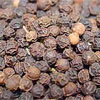 (Piper Nigrum)
(Piper Nigrum)
Pepper – Ingl., Pfeffer – Ted., Poivre – Fr, Pimienta – Sp., Перец – Russ
It belongs to the Piperaceae family, and is a native of southern India. Today the largest producers of pepper are Vietnam, which is the biggest exporter in the world, India, which is the first consumer, Indonesia, Malaysia, Brazil and Madagascar.
The pepper plant is a long stem creeper, up to 10 m. Its fruits are small spherical berries, bright red when ripe.
Our offer includes: black pepper varieties (grain type TGEB, TGSEB, type TGSEB for sausage, ground, granulated, half a grain, grain ¼, 1/8 grain and many other types), white pepper (grain type Double Washed, Standard, Hand Picked, ground, granulated, half a grain, and other types), green pepper (dried, whole or ground and in brine), red pepper (in brine), pink pepper (dried, whole or ground), cubeb pepper.
Varieties
There are over 600 varieties of pepper (genus Piper), but few are used as spice, often distinguished only by the degree of maturation and the type of processing.
Common pepper on the market is the fruit of Piper nigrum, consisting of small spherical green berries that reach a bright red when fully ripe. Depending on the period of collection and / or processing undergone, we can distinguish the following types of pepper:
- black pepper (collected at veraison and dried)
- white pepper (collected at veraison or later, dehulled by maceration in water or mechanically dried)
- green pepper (unripe harvest, dried and placed in brine)
- red pepper (ripe harvest, placed in brine)
The pepper plant is a creeper with a thin and woody stem. Its fruits (from 20 to 40 in each ear) contain a single seed, which is by far the largest and aromatic part of the fruit.
Food composition
Starch (33%), fats (7%), essential oil (1 – 2%), nitrogen compounds (12%) Piperine – an alkaloid, usually below 9%, responsible for the spiciness of pepper. It is contained both in the seed and in the pulp, especially in black pepper.
Healing effects
Pepper has digestive, anti-inflammatory and diuretic properties. It is used in case of anemia, diabetes and respiratory problems. The skins of pepper stimulates the absorption of fat by providing more energy to the body. Pepper can also have an external use on sebaceous glands. It is also used for relaxing and for rubbing muscles.
Culinary use
Pepper, depending on the type (white, black, green and red pepper) has a more or less pungent taste and aromatic smell.
It is used either in whole grains, or crushed and ground into fine powder to flavor a wide variety of dishes: soups, sauces, meat, fish, stews, salads, sausages and so on.
White pepper is used more traditionally in Western cuisine, while black pepper is the basic ingredient for a great variety of Eastern dishes. Typical recipes with green pepper, the delicate fillet. It is often mixed with other spices to flavor mixtures suitable for various types of meat and fish.
Since ancient times, pepper has been very useful for food preservation, especially for meat.
Preservation
Pepper grains keep their organoleptic properties longer than the ground or crushed pepper. Storage area must be cool, ventilated, poorly lit and dry.
Cubebe Pepper
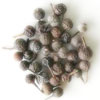 pepe di cubebe (Piper Cubeba)
pepe di cubebe (Piper Cubeba)
Cubebs – Ingl., Cubeben – Ted., Poivre cubèbe – Fr, Cubeba – Sp., Перец Кубеба – Russ.
Cubebe pepper belongs to the Piperaceae family. It grows wild and is cultivated in the islands of Java and Sumatra in the Malay Archipelago, as well as in the West Indies and in few African areas.
Its berries are very similar to those of black pepper variety. They have a small beard which is the stalk by which they were on the plant.
They are harvested before reaching full maturity. The pericarp of the berry is brown or blackish, while the seed inside is whitish, resinous.
Our offer includes: cubebe pepper in grains
White Pepper from India and Thailandia
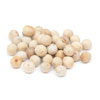 pepe bianco (Piper nigrum)
pepe bianco (Piper nigrum)
Indian and Thai Pepper are not very common on the market. Pepper from India is obtained by mechanical scrape of black pepper, preserving most of its organoleptic characteristics. It is light beige. It is almost exclusively used in India.
White Pepper from Vietnam
 pepe bianco (Piper nigrum)
pepe bianco (Piper nigrum)
White pepper from Vietnam is produced from dried high specific gravity black pepper (from 580 to 620 and beyond g/l).
It is left soaking for ten days, sometimes with the fraudulent addition of enzymes in order to speed the process of natural fermentation and reduce production times. During this short period the pericarp absorbes water until its almost complete separation. This process is helped by the use of rudimental machines.
White pepper from Brasil
 pepe bianco (Piper nigrum)
pepe bianco (Piper nigrum)
Although produced in limited quantities (about 2,000 tons per year)the quality of Brazilian white pepper is good and appreciated on the market place. It is processed between October and November by soaking in water which, in compliance with the latest government regulations, should no longer be freely taken from polluted rivers and streams with obvious positive impact on the quality and safety of the product, even from the microbiological point of view.
White Pepper from China
 pepe bianco cina (Piper nigrum)
pepe bianco cina (Piper nigrum)
Produced in the peninsula of Henan, China White pepper has been commercially known for only a few years. As its quality has not been sufficiently standardized yet, it is common to find lots of bad smelling goods, mailnly due to a too long soaking in water, provoking excessive fermentation and enzymatic action.
White Pepper Sarawak
 (Piper nigrum)
(Piper nigrum)
White Sarawak pepper’s origin is similar to Muntoq’s.
Both share the same kind of processing and organoleptic features.
It is produced in the region of Sarawak, Borneo Island (Malaysia), not far from the island of Bangka.
White Pepper Muntok
 pepe bianco (Piper nigrum)
pepe bianco (Piper nigrum)
White pepper Muntoq is the best known and popular on the Italian and worldwide market. It is produced in the island of Bangka, in Java Sea near the southeastern coast of Sumatra and Borneo. Commercial brands which can be found on the international market are:
– White pepper Muntoq FAQ
– Muntoq “Double Washed”
– Muntoq the HPS (Hand Picked Selected).
White Pepper
 (Piper nigrum)
(Piper nigrum)
Pepe Bianco – Ingl., Echter Pfeffer– Ted., Poivre blanc– Fr, Pimenta blanca – Sp., Белый перец – Russ.
White pepper is prepared from the berries of Piper nigrum harvested when fully ripe (when red colored). Often peasants harvest it in the same period of pepper bound to become black. The traditional process consists in the immersion of fresh pepper in water for a period of about a week.
Black Pepper from Thailand, China, Ecuador, Honduras
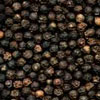 (Piper nigrum)
(Piper nigrum)
Black pepper is grown in many countries- besides those already mentioned- including Thailand, China, Ecuador and Honduras. In all cases the quantities produced are small and used in the countries of origin, rarely exported.
Ecuador produces about 3000 tons of a variety of black pepper using a unique method.
Black Pepper from Madagascar and Sri Lanka
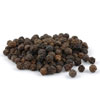 (Piper nigrum)
(Piper nigrum)
These two countries offer a small-size variety of black pepper, suitable for grinding, after which it is possible to get a quite dark powder. Imports from these area, usually very small, are usually made by small dealers, who want to buy cinnamon sticks from Sri Lanka and cloves from Madagascar; since there are not goods enough to load a container “single product” they are forced to buy
Black Pepper Lampong
 (Piper nigrum)
(Piper nigrum)
Black pepper comes from the region of Lampong island of Sumatra, Indonesia. Its largest market is represented by United States, where it is almost exclusively used for grinding. This is in fact a small size pepper, with a pungent aroma and grayish colored after grinding.
Guinea Grains
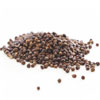 (Amomum melegueta)
(Amomum melegueta)
Guinea grains – Ingl., Paradieskörner – Ted., Graines de paradis – Fr, Malagueta – Sp., Кардамон – Russ.
Guinea Grains plant, the Amomum melegueta (“melegueta” or “pepper of Guinea”), belongs to the Zingiberacee family as well as cardamom pods and is a native to Equatorial Guinea. Its pink or yellow flowers look lke orchids. Its fruits contain reddish-brown seeds with white flesh. Ghana is the leading producer.
Black Pepper Sarawak
 (Piper nigrum)
(Piper nigrum)
This brand comes from the region of Sarawak, Borneo Island (Malaysia). Harvest is from April to September, with production peak in May and June. The Sarawak region produces about 25,000 tons, 90% exported.
Characteristics of Sarawak black pepper
A medium size black pepper, very aromatic, with light- yellow pulp grains.
 (Piper nigrum)
(Piper nigrum)
The black pepper plant grown in Brazil is different in organoleptic characteristics peculiar and easily recognizable, including the odor and color of the pulp.
Using black pepper origin Brazil
The Brazilian pepper has an aromatic note particularly welcome in some Italian regions, so the food industry prefers it for the production of fresh sausage..
 (Piper nigrum)
(Piper nigrum)
Over the last ten years Vietnam has gradually increased its influence on pepper international market. This Asian country is the world’s leading exporter of black pepper (about 85,000 tons per year) for two reasons: firstly, its favorable climate conditions and rural traditions in the cultivation of pepper; secondly, domestic use is almost zero.
 (Piper nigrum)India produces about one million tonnes of spices a year, 90% of which are intended for domestic consumption and export only the remainder.
(Piper nigrum)India produces about one million tonnes of spices a year, 90% of which are intended for domestic consumption and export only the remainder.
Characteristics of black pepper origin India
This brand is certainly better known in Italy and worldwide for its organoleptic properties and especially for its producers’ exceptional experience in processing and cleaning.
 (Piper nigrum)
(Piper nigrum)
Black pepper – Ingl., Echter Pfeffer– Ted., Poivrier noir– Fr, Piper nigrum – Sp., Перец черный – Russ.
Black pepper is prepared by picking the unripe fruit as soon as its skin color begins to change (veraison). The more unripe they are picked, the more they become spicy.
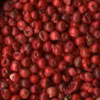 (Schinus terebinthifolius )
(Schinus terebinthifolius )
Pink peppercorn – Ingl., Rosa pfeffer – Ted., Poivre rose – Fr, Pimienta rosa – Sp., Розовый перец – Russ.
Pink pepper belongs to the Anacardiacee family and is a native to Peru and Chile. It is not a variety of pepper: it takes its name because of similarity of its fruits, yet they have totally different texture and flavor. It is also cultivated in other parts of America, in Africa and some Mediterranean country. It is a small evergreen tree with aromatic leaves and clusters of pink fruit. It is remarkably able to adapt and tends to be rather invasive, so that in some states (Florida, Australia) its cultivation is controlled, in order to protect the existing flora and not to create environmental troubles.
Our offer includes: dried pink pepper (ground or beans).
 pepe verde(Piper Nigrum)Green pepper is obtained from the unripe fruit of Piper nigrum plant. Its berries are immediately dried or stored in an acidic brine: this makes green pepper even more aromatic and softer. While black pepper and white pepper are mostly used in Western countries, green pepper is a widely used in Thai cuisine. Its anti-fermentative properties help the long-term storage of different types of foods, including meat, fish, cheese.
pepe verde(Piper Nigrum)Green pepper is obtained from the unripe fruit of Piper nigrum plant. Its berries are immediately dried or stored in an acidic brine: this makes green pepper even more aromatic and softer. While black pepper and white pepper are mostly used in Western countries, green pepper is a widely used in Thai cuisine. Its anti-fermentative properties help the long-term storage of different types of foods, including meat, fish, cheese.
Our offer includes: Dehydrated green pepper, beans and ground, green pepper in brine.